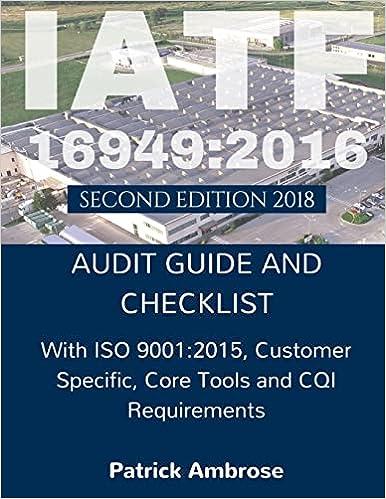1. What is the total amount of traceable fixed manufacturing overhead for the Alpha product line and for the Beta product line? 2. What is

| 1. | What is the total amount of traceable fixed manufacturing overhead for the Alpha product line and for the Beta product line? | |
| 2. | What is the companys total amount of common fixed expenses? | |
| 3. | Assume that Cane expects to produce and sell 92,000 Alphas during the current year. One of Cane's sales representatives has found a new customer that is willing to buy 22,000 additional Alphas for a price of $128 per unit. If Cane accepts the customers offer, how much will its profits increase or decrease. | |
| 4. | Assume that Cane expects to produce and sell 102,000 Betas during the current year. One of Canes sales representatives has found a new customer that is willing to buy 4,000 additional Betas for a price of $60 per unit. If Cane accepts the customers offer, how much will its profits increase or decrease? | |
| 5. | Assume that Cane expects to produce and sell 107,000 Alphas during the current year. One of Cane's sales representatives has found a new customer that is willing to buy 22,000 additional Alphas for a price of $128 per unit. If Cane accepts the customers offer, it will decrease Alpha sales to regular customers by 11,000 units. |
| a. | Calculate the incremental net operating income if the order is accepted? (Loss amount should be indicated with a minus sign.) |
| 6. | Assume that Cane normally produces and sells 102,000 Betas per year. If Cane discontinues the Beta product line, how much will profits increase or decrease? |
| 7. | Assume that Cane normally produces and sells 52,000 Betas per year. If Cane discontinues the Beta product line, how much will profits increase or decrease? |
| 8. | Assume that Cane normally produces and sells 72,000 Betas and 92,000 Alphas per year. If Cane discontinues the Beta product line, its sales representatives could increase sales of Alpha by 12,000 units. If Cane discontinues the Beta product line, how much would profits increase or decrease? |
| 9. | Assume that Cane expects to produce and sell 92,000 Alphas during the current year. A supplier has offered to manufacture and deliver 92,000 Alphas to Cane for a price of $128 per unit. If Cane buys 92,000 units from the supplier instead of making those units, how much will profits increase or decrease? |
| 10. | Assume that Cane expects to produce and sell 62,000 Alphas during the current year. A supplier has offered to manufacture and deliver 62,000 Alphas to Cane for a price of $128 per unit. If Cane buys 62,000 units from the supplier instead of making those units, how much will profits increase or decrease? |
| 11. | How many pounds of raw material are needed to make one unit of Alpha and one unit of Beta? |
| 12. | What contribution margin per pound of raw material is earned by Alpha and Beta? (Round your answers to 2 decimal places.) |
| 13. | Assume that Canes customers would buy a maximum of 92,000 units of Alpha and 72,000 units of Beta. Also assume that the companys raw material available for production is limited to 300,000 pounds. How many units of each product should Cane produce to maximize its profits? |
| 14. | Assume that Canes customers would buy a maximum of 92,000 units of Alpha and 72,000 units of Beta. Also assume that the companys raw material available for production is limited to 300,000 pounds. What is the maximum contribution margin Cane Company can earn given the limited quantity of raw materials? |
| 15. | Assume that Canes customers would buy a maximum of 92,000 units of Alpha and 72,000 units of Beta. Also assume that the companys raw material available for production is limited to 300,000 pounds. Up to how much should it be willing to pay per pound for additional raw materials? (Round your answer to 2 decimal places.) |
Cane Company manufactures two products called Alpha and Beta that sell for $180 and $145, respectively. Each product uses only one type of raw material that costs $6 per pound. The company has the capacity to annually produce 118,000 units of each product. Its unit costs for each product at this level of activity are given below: Alpha Beta Direct materials Direct labor Variable manufacturing overhead Traceable fixed manufacturing overhead Variable selling expenses 19 27 17 30 27 Total cost per unit $165 $140 The company considers its traceable fixed manufacturing overhead to be avoidable, whereas its common fixed expenses are deemed unavoidable and have been allocated to products based on sales dollars
Step by Step Solution
There are 3 Steps involved in it
Step: 1

See step-by-step solutions with expert insights and AI powered tools for academic success
Step: 2

Step: 3

Ace Your Homework with AI
Get the answers you need in no time with our AI-driven, step-by-step assistance
Get Started


